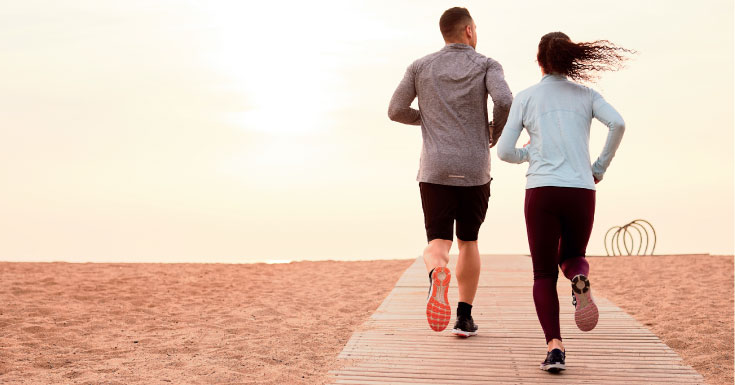Reverse running, also known as “retro” or backward running, is a running style that has grown popular in recent years. Experts in this form of running suggest that you can improve speed and stamina just by alternating between running forwards and backwards. Moreover, it can also help with increased calorie burn.
The Science of Reverse Running
To demonstrate its effectiveness, a research study conducted by the University of Milan in 2011 found that this form of running has a positive impact on joints. Forward running involves fewer muscle fibres which are then subjected to greater resistance and effort, which can result in more injuries. Reverse running, on the other hand, involves utilising more muscle fibres that are subjected to less resistance and effort, mitigating the chance of injury.
In a separate 2011 study, researchers found that when a group of runners ran forward, they would land on the ground with the back of their feet. When they lift their feet off the ground, they would roll the ball of the foot. In contrast, when they ran in reverse or backward, they would hit the ground with the front of the foot and move to roll backwards. The different ways of “landing” and “take-off” in reverse running cause the muscles to fire differently. This meant more energy was required to go backwards than needed going forward; thus, more energy is burned running in this manner.
Moreover, students at an American university replaced their regular workout with a backward run for 15-45 minutes three times a week for six weeks. The results showed that they lost an additional 2.5 per cent of their body fat compared to their regular running regimes.
Reverse running is also a good option for those who have knee problems. Another study in 2012 highlighted that running backwards showed lower impact on the knees and burned more calories compared to conventional running.
Benefits Of Reverse Running
If the goal of reverse running is to improve the results of normal cardio activities (e.g. running, cycling, etc.), then running backwards appears to be the most effective. Based on the studies above, we have summarised some of the key benefits of this alternative running technique:
- Improved posture: Running backwards naturally changes one’s posture as it requires you to stand upright. This, in turn, helps correct your posture during a forward run.
- Improved results for weight loss: If the reason for your workout is to lose those extra pounds, running backwards helps burn around 30% more calories than conventional running.
- Reduces injuries: Your knees and ligaments are less prone to receiving damage.
- Better performance and muscle growth: When running backwards, more effort is needed in terms of movement, as it is more difficult to move from one point to another. This increases cardiovascular efficiency whilst improving endurance and stamina. Calf muscles, quadriceps, and shins become stronger and more balanced.
- It reduces boredom: Running forward for miles on end can feel tedious, whereas running backwards can be fun and exciting as it adds another dynamic to your workout.
- Help rehab injuries: Reverse running can be an effective strategy for rehabbing groin, knee joint, hamstring, shin, low back and hip injuries, just to name a few. This is due to differing demands involved in running backwards versus forwards — a greater range of motion at the hip joint, healthy posture, and greater activation of particular muscles.
How to do Reverse Running
As you reverse run, you should remember to keep your lower limbs parallel to the assigned direction, with your head and shoulders rotating to maintain your trajectory. With time, you will look back less and less as professional retro runners hardly ever turn their heads.
However, be careful as it can be difficult to recover from a backwards fall. By turning your head midrun, you can remove this visual disadvantage. However, do note that constant head turns can lead to soreness and tension in the neck. To ease you in, you can attempt head rolls, crab walks, or axes to familiarise yourself with the movements and limit injury from potential falls.
Tips for Beginners
1. Keep your chest high/shoulders back
2. Take small steps – your steps should be aligned with your body
3 Pump your arms (set the rhythm)
4. Be safe:
- Run on even ground and in less crowded areas
- Be aware of your surroundings
- Run in intervals (e.g. 30 sec to 1 min backwards, 5 mins forward)
- Run with a friend and alternate between forward and backward running
5. Make sure you warm up, particularly around the calves and hamstrings


